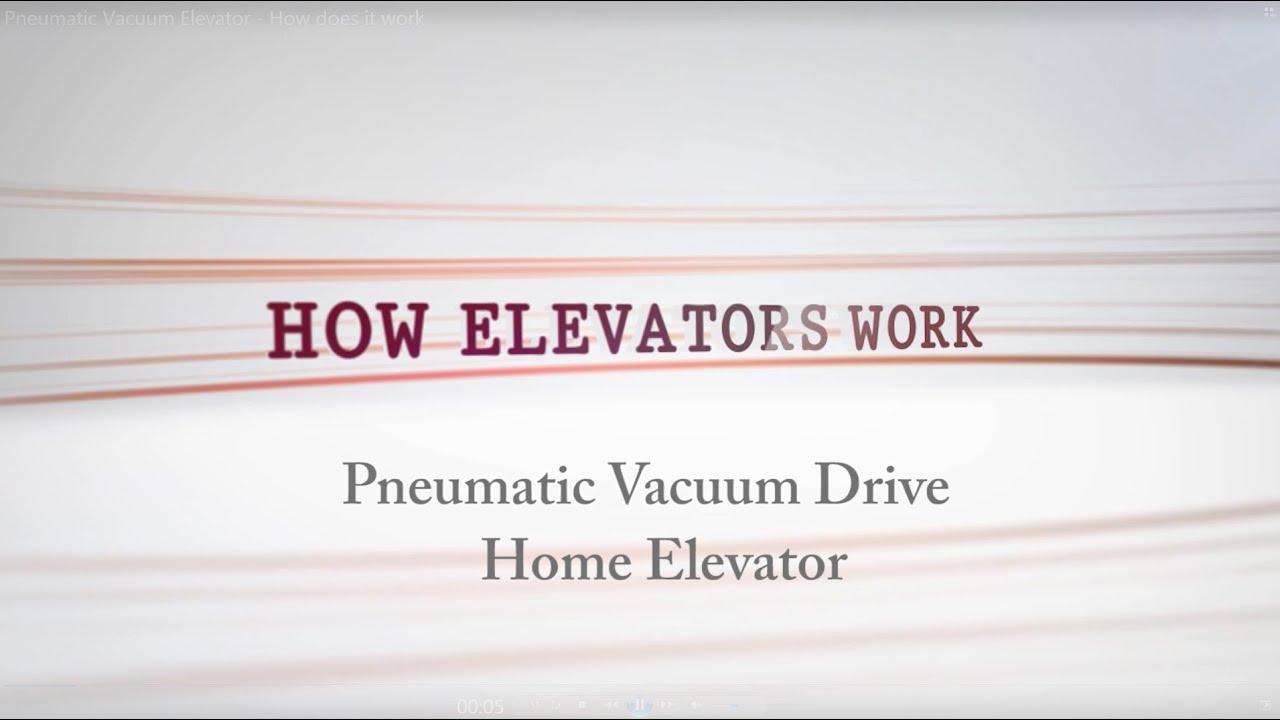Let’s discuss the question: how does a vacuum elevator work. We summarize all relevant answers in section Q&A of website Myyachtguardian.com in category: Blog MMO. See more related questions in the comments below.

Table of Contents
Are vacuum elevators Safe?
Vacuum elevators can be the best for home as they are surprisingly safe and comfortable. They work with pneumatic technology allowing the smooth transition between floors which need much less energy and space as compared to other types of elevators. Moreover, they are easy to operate.
Are vacuum elevators loud?
Q: How loud is the vacuum elevator ? A:The out door split type is almost noiseless, as for the indoor head type vacuum elevator is around 85 decibels, almost same noise as your home vacuum cleaner.
Pneumatic Vacuum Elevators: How do pneumatic home elevators work?
Images related to the topicPneumatic Vacuum Elevators: How do pneumatic home elevators work?

How does a PVE elevator work?
A pneumatic vacuum elevator (PVE) is a type of elevator that uses air pressure to gently lift and lower an elevator car instead of cables and pistons. Because it doesn’t require heavy equipment like traditional elevators, it takes up considerably less space and is highly energy-efficient.
Are pneumatic lifts safe?
The pneumatic elevator is about as loud as a vacuum cleaner when they are running. They are completely safe, as they have to meet the ASME elevator standards by Liftinstituut. They can be installed just about anywhere as they are self-supported, which makes them easier to install in your home.
How much is a vacuum elevator?
Typically, your vacuum elevator cost will be somewhere between $30,000 and $50,000.
What is a hydraulic elevator?
Hydraulic elevators are elevators which are powered by a piston that travels inside a cylinder. An electric motor pumps hydraulic oil into the cylinder to move the piston. The piston smoothly lifts the elevator cab. Electrical valves control the release of the oil for a gentle descent.
What is a roped hydraulic elevator?
Roped hydraulic elevators use a combination of a hydraulic jack and cables to lift the elevator car. This provides the smooth ride of a hydraulic elevator without the need to dig a deep hole in the ground. The hydraulic jack resides in the hoistway between the rails. A pulley is attached to the top of the jack.
What are the different types of elevators?
- Geared and Gearless Traction Elevator. Geared and Gearless Traction elevators can be separated into three different categories: …
- Hydraulic Elevator. …
- Machine-Room-Less (MRL) Elevator. …
- Vacuum (Air Driven) Home Elevator.
Which of the following is not a safety device on an elevator?
Which of the following is *not* a safety device on an elevator? Call button. A call button is not a safety device, it just “calls” the elevator to a given floor. It is not the same thing as the telephone box that can be found inside some elevators.
What are the disadvantages of elevators?
- Stairs Are Faster. The elevator is very useful when it is necessary to travel the distance between several floors. …
- Promotes Laziness. A significant disadvantage of using an elevator is the laziness that it promotes. …
- Claustrophobia Concerns. …
- Germs Haven.
Pneumatic Vacuum Elevator
Images related to the topicPneumatic Vacuum Elevator

What are the advantages of hydraulic lift?
The Advantages of Hydraulic Lifts
Are less expensive to install than other elevator types. Occupy less space in a building, requiring almost 10% less area for the lift shaft than other elevating means. Do not require a separate machine room. Similarly, overhead structural requirements are not required.
What is the cheapest type of elevator?
Cable-driven elevators are usually the least expensive while pneumatic elevators generally are the most costly. Chain-driven, traction units and hydraulic elevators fall into the midrange cost.
What is a shaftless elevator?
A shaftless home elevator is a compact elevator designed to provide easy movement between two floors in the home. Also known as through the floor elevators, these mobility solutions can be situated in tight spaces and don’t require extensive construction prior to installation.
What is the smallest residential elevator?
The Smallest Elevator: Stiltz Duo Home Elevator
The smallest of Stiltz home elevators, the Stiltz Duo, takes up less than seven square feet and has one of the most compact footprints of any residential elevator available.
What are traction elevators?
Traction elevators are lifted by ropes, which pass over a wheel attached to an electric motor above the elevator shaft. They are used for mid and high-rise applications and have much higher travel speeds than hydraulic elevators.
Can hydraulic elevators fall?
Hydraulic elevators are more likely than cable elevators to fall. These elevators are pushed from the bottom by a giant piston, similar to those you see on service station car jacks. Because the piston is subject to ground corrosion, it can rot, which could cause the elevator car to fall.
Why is it called a traction elevator?
Sometimes two elevators are built so that their cars always move synchronously in opposite directions, and are each other’s counterweight. The friction between the ropes and the pulley furnishes the traction which gives this type of elevator its name.
What is the difference between hydraulic and traction elevator?
A hydraulic elevator uses an electronic pump that pushes oil into a cylinder where the pressure is increased, pushing a piston and causing the elevator to rise. A traction elevator, on the other hand, uses a system of cables, pulleys, and counterweights to lift the cab.
Pneumatic Elevator Demo
Images related to the topicPneumatic Elevator Demo

How does hydraulic home lift work?
Hydraulic lifts work on a basic principle: to go up, a pump pushes oil into the cylinder, pushing the piston (which pushes the lift car) up. To go down, the valve opens and oil is allowed to flow back into the reservoir, and is pushed back using the gravitational force of the lift car.
How many floors can a hydraulic elevator travel?
Hydraulic Elevator Specifications
Hydraulic elevators are typically efficient up to five or six floors with a typical speed of up to 150 feet per minute (fpm) if powered by a piston.
Related searches
- vacuum elevator cost
- vacuum elevator dimensions
- are vacuum elevators safe
- used vacuum elevator for sale
- vacuum elevator problems
- pve elevator installation
- how does a pneumatic vacuum elevator work
- how do vacuum elevators work
- vacuum elevator installation
- what is a vacuum elevator
- how do vacuum lifts work
- how does a vacuum lift work
- vacuum elevators near me
- pneumatic elevator
Information related to the topic how does a vacuum elevator work
Here are the search results of the thread how does a vacuum elevator work from Bing. You can read more if you want.
You have just come across an article on the topic how does a vacuum elevator work. If you found this article useful, please share it. Thank you very much.

